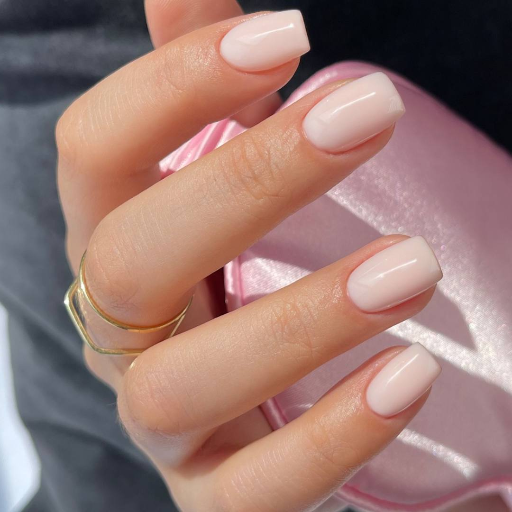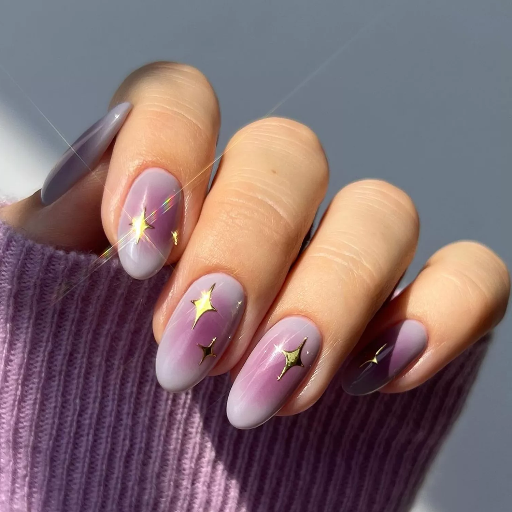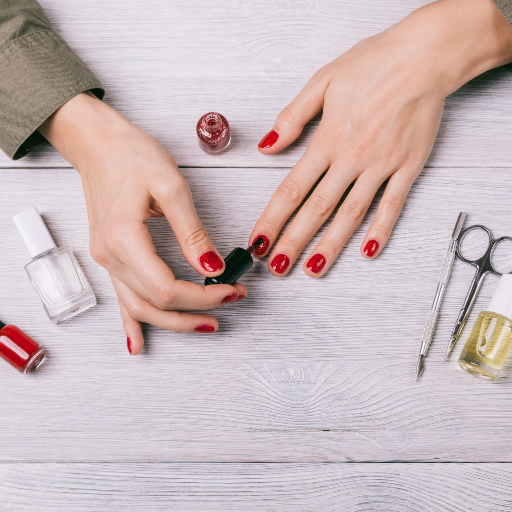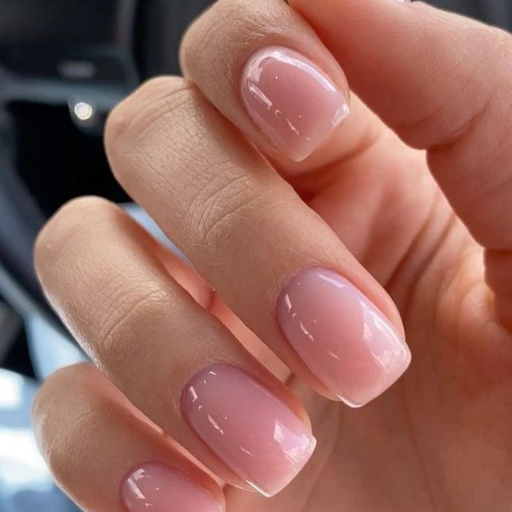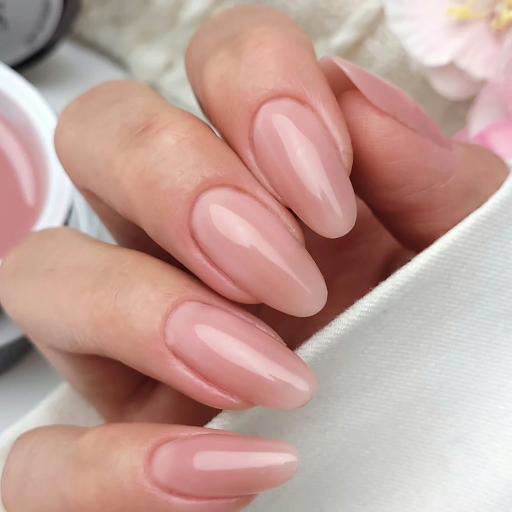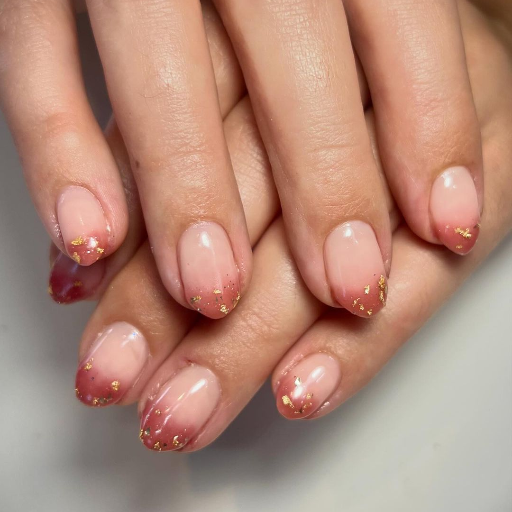For one to achieve that perfect, sun-kissed complexion as seen on professional models, it is wise to understand the two primary makeup practices; bronzing and contouring. Bronzing and contouring are frequently mistaken for each other or used in place of each other, however, the two are quite different, and specific bronzers contour sticks or creams, and specific application techniques should be employed to achieve maximum effectiveness. This article will discuss the basic concepts of bronzer vs. contour, demonstrate how to choose the best hues according to your skin tone, and explain the precise techniques to define your facial features. You will also be able to understand how best to apply bronzer and contour in the right proportions for the most balanced look after reading this. There is no doubt that whether you are new to makeup or want to improve your skills, this is the right guide for you to get some practical advice on these vital beauty techniques.
What is a Bronzer and How Does it Differ from a Contour?

Bronzer is primarily used to add warmth and dimension to the skin, mimicking a sun-kissed glow. It is typically applied to areas where the sun would naturally hit, such as the forehead, cheeks, and nose. Bronzers often come in shades of tan, gold, and bronze and are available in powder, cream, or liquid formulas.
Contour, on the other hand, is designed to create shadows and sculpt the face by defining its structure. Contour products are generally cool-toned and are applied to areas like the hollows of the cheeks, the jawline, and the sides of the nose. Unlike bronzer, contouring focuses on enhancing the angles and definition of the face rather than adding warmth.
Difference Between Bronzer and Contour
Despite both being utilized to accentuate facial features, bronzer, and contour do not serve the same purpose. A bronzer is… used to add warmth, or a ‘tan’ to the skin so that it can be easily applied to highlight areas of the face such as the cheekbones, forehead, or the bridge of the nose. Typically bronzers are available in gold, tan, or bronze shades, and are pretty much available in the form of cream, powder, or liquid.
The purpose of bronzer is certainly different than that of a contour, a makeup structuring product. There is a distinct difference between a bronzer and a contour, a contour has a cooler tint as it is designed to make a shadow-like effect alongside a bronzer. It uses strategic positioning, or the pliable nature of the bronzer to achieve strength around parts of the face, such as the hollow cheekbones, or the side of the jaws. The major reason for applying the contour is definition, it makes the face appear sculptured while retaining its harsh features. Yes, you do apply both bronzer and contour in succession, but it should be noted that one bronzer adds strength while the other creates dimension around the face, or vice versa in not applying both the bronzer and contour.
Understanding the Purpose of Bronzer
Bronzer is a unique makeup product that performs the overall beautification of skin by adding a natural glow and apparent bronzed features. Contour may sometimes do the opposite as it enhances facial features by applying shadows creating a more structured aesthetic. Bronzer in this context would work towards that illusion of sun-kissed high points of the forehead, cheeks, nose, and chin. Most people love to apply bronzers with a fluffy brush to get a blended finish. Bronzer comes in several formulations which include powder, cream, and liquid. The idea of a bronzer is to never overshadow the rest of the makeup but rather help it look more alive, and warm, and maintain a gentle overall look. If applied properly, bronzer would only enhance the undertones of the skin while giving it a more glowing effect.
When to Use Bronzer vs Contour
Bronzer and contour, while both a great application, serve different purposes when applied as makeup. Bronzer is used to warm up the face and give it depth as one would imagine a sunset tan on their skin. It is mostly placed on high cheekbones, the nose bridge, and forehead areas to give the skin a warm, tropical appearance. In contrast, contour products add depth to one’s facial features by defining the shadow areas of the face, it helps shape the face. Appropriate areas to use contour products include areas where bony structures naturally create shadows such as the hollows of cheeks, sides of the jaw bone, and sides of the nose. In terms of application, bronzers are supposed to be lightly blended on the skin to achieve a radiant effect, while contours require more precision blending and placement to attain sharp edges. The decision to use bronzer or contour products hinges on the ultimate look you have in mind; bronzers help in achieving a warmer and brighter look, while contour products help to reinforce the definition of a person’s face.
How to Apply Bronzer for a Natural Sun-Kissed Glow

- Select the Right Shade and Formula
Begin by choosing a bronzer one to two shades darker than your natural skin tone. Opt for a matte formula for a subtle look or one with shimmer for added radiance, depending on your preferences and skin type.
- Prepare Your Skin
Ensure your skin is clean, moisturized, and primed before application. A smooth, hydrated base helps the bronzer blend effortlessly and provides a more natural finish.
- Use the Correct Tools
A fluffy, medium-sized makeup brush is ideal for applying bronzer. This ensures a light, buildable application, while rounded edges help create a seamless blend.
- Apply in Key Areas
Focus on the high points of your face where the sun naturally hits, such as your cheekbones, temples, forehead, and the bridge of your nose. Lightly sweep the bronzer in these areas, building up the color gradually.
- Blend Thoroughly
Use circular or sweeping motions to blend the bronzer into the skin, ensuring there are no harsh lines. Blend down the neck slightly to create a cohesive look and avoid any noticeable color difference between the face and neck.
- Set Your Bronzer
For long-lasting wear, set your bronzer with a light dusting of translucent powder or a setting spray. This step ensures your makeup remains in place throughout the day, maintaining a natural and polished appearance.
Choosing the Right Bronzer for Your Skin Tone
Selecting the correct bronzer shade is essential for achieving a natural sun-kissed look that flatters your complexion. Start by determining your undertone—whether it is warm, cool, or neutral. Individuals with warm undertones should opt for bronzers with golden or orange-based hues, while those with cool undertones benefit from bronzers with ashy or taupe shades. For neutral undertones, a balance between warm and cool tones works best.
Additionally, match the bronzer intensity with your skin depth. Fair skin tones should lean toward light, sheer formulas in soft peach or light tan shades to avoid an overly dramatic effect. Medium skin tones can experiment with richer golden or honey tones, enhancing warmth naturally. For deeper skin tones, choose bronzers with copper or deep terracotta pigments to add dimension without appearing ashy. Always test the bronzer under natural lighting conditions, and remember that a well-chosen bronzer blends seamlessly with your skin, enhancing rather than overpowering your natural beauty.
Tools Needed for Applying Bronzer
The result where you get the perfect bronzed appearance according to your expectations, you need to make use of the correct tools. Having fluffy bronzer brushes is critical as they can ensure a smooth blend and even distribution of the bronzer which will add a layer of perfection. Consider using synthetic hair brushes as they are durable yet precise. When applying cream or liquid bronzers, the props that can provide the best results would be the damp makeup sponge or a Spongy-dense buffing brush. Other useful items that will allow for a more precise application are a compact mirror and a good source of luminescence especially when working with the dry bronzer around a few areas such as the cheekbone, jaw, and temple. Ensuring the type of bronzer brushes mentioned above are available in clean form will elevate the process of application toward a broader performance.
Exploring Different Bronzer Formulas

There are three major forms of bronzer: cream, powder, and liquid. It’s easy to apply which is why a cream bronzer is perfect for dry or normal skin as it provides a dewy and natural look. Whereas, the powder bronzer is more suitable for combination or oily skin due to its matte surfaced end, and it can be easily blended with a fluffy brush. Liquid bronzers are the most versatile as they can be used with targeted contouring or added to foundation or moisturizer for an all-over shine. All formulas serve certain skin types and looks which makes bronzers very versatile.
Powder vs Cream Bronzers – A Detailed Comparison
The features, application method, and skin type compatibility of powder and cream bronzers are the factors that could help you make a choice. Dans la province de Quebec, bronzers en poudre sont parfaits pour les peaux grasses ou mixtes en raison de leur effet mat et de leur capacité à fixer le maquillage. They are ideal in a humid climate for someone who wants to have a longer-lasting build-up contour or for someone who applies makeup with a dense and fluffy brush for a blended finish.
On the other hand, cream bronzers are more effective for dry or normal skin types since they hydrate the skin and create a skin like finish. This is usually done with a stippling brush or by using the fingers to ensure that the bronzer blends well with the skin. Largement utilisées pour les clims plus froides, l’appearance resplendissante qui depose la peau finie avec des cream bronzers, peuvent prendre quelques heures a disparaitre, c’est pourquoi elles sont souvent acommodees pour les porlesonlooks.
So for people with a combination skin type who want their makeup to remain elegant, they will often prefer powder bronzers but for those who want that natural glow, cream bronzers are the best. Otherwise, the choice will be due to skin type and personal preferences.
Benefits of Matte Bronzer vs Radiant Finishes
Matte bronzers are those that add a sculpted look without any shimmer or shine to them. They are primarily used to shade a face in the procedure known as contouring. It also helps to give more definition to the face by casting shadows as it mimics the natural focus of light. These bronzers are especially useful for oily skin types since they prevent texture or pores from being highlighted while keeping one’s skin shine-free. More importantly, the bronzers are long-lasting.
In contrast, radiant finish bronzers add a glow to the skin while priming the tanning effect which leaves the user with a glowing and youthful look. Slight shimmers are helpful especially for dry or mature skin since these shimmers improve dewy skin and diminish a dull-looking face. Ordinarily, radiant bronzers are used to add warmth and diffuse it because they are good for areas like cheekbones or the bridge of the nose that catch light easily.
At the end of the day, the choice is based on the outcome that is sought and the skin type of the person. For structured and oil skin types, matte bronzers are favorable whereas, for radiant finishes, they are great for adding more glow to the appearance of someone’s face.
How to Select the Perfect Bronzer Formula
When selecting a bronzer formula, it’s essential to align the product’s characteristics with your skin type, tone, and desired effect. Start by considering your skin type—matte bronzers are ideal for those with oily or combination skin due to their shine-controlling properties, while radiant or shimmer bronzers work well on dry or mature skin for a luminous finish. For the most natural look, opt for a bronzer shade that is only 1-2 shades darker than your skin tone and complements your undertones; warm golden or peachy bronzers suit yellow or olive undertones, whereas cooler shades with hints of pink or red pair well with fair and neutral undertones.
Next, take into account the type of finish and application method. Powder bronzers are versatile and ideal for beginners, offering easy blending and buildable coverage. Cream bronzers create a more natural, skin-like appearance, often favored for dry or textured skin. Liquid or gel-based bronzers deliver a lightweight, dewy finish that’s perfect for layering underneath or over foundation. Lastly, test the bronzer in natural daylight to ensure it blends seamlessly and complements your natural complexion. Making an informed choice ensures your bronzer enhances your features while maintaining a cohesive, natural appearance.
Tips for Using Bronzer to Enhance Your Complexion

Select Appropriate Equipment: A soft angled bronzing brush is required for powder bronzer, and a firm synthetic one is required for cream products. If you’re using gel or liquid bronzers, then a slightly humid sponge is more apt.
Determine Which Areas to Bronze: Apply bronzer on planes of the face that are sun-kissed at the highest level- cheekbones, temples, jawline, and the nose bridge.
Blend Like a Pro: For professional blending, either small circular movements or back-and-forth movements are excellent for eliminating sharp lines or removing cuts. Blending in itself is a science for creating a natural and youthful face.
Applying with Scrutiny: Apply only a tiny layer of makeup and let it settle, repeat this step for covering larger areas. This prevents an overly makeup-duty brown face.
Set Applicators: Creams or liquid bronzers should be topped off with translucent powders to avoid them rubbing off easily. Apply a light spray setting the end look.
Improvise with the Environment: Before the procedure is finalized, ensure you check how the look would appear under natural light to ensure it looks great.
With constant practice of these methods, bronzers will never be off your makeup game whilst ensuring you flaunt a flawless look along with a pretty glow.
Creating a Warmth and Radiance to the Face
To apply bronzer on the face should be done with precision since it is meant to create a sense of sun-kissed warmth and saturation which can often overpower one’s complexion. The bronzer needs to be color-matched and applied in the areas where the sun would naturally touch first. For example, foreheads, cheekbones, and chins can be marked with a 3 shape pattern which applies the bronzer thoroughly. To create a lighter more flattering effect, one should use bronzers that make use of matte formulas, however, for a satin look, bronzers that are more heavily saturated should be used instead. Lastly, once the bronzer is applied, it can be blended for even coverage to remove the possibility of harsh lines being created.
For a negative look but with the perfect amount of glow, one should make use of bronzers that do not use a lot of shimmer as that tends to give off an extremely artificial aesthetic. This gives the user that perfect sense of beauty without appearing tacky. Anti-shimmer bronzers also tend to go well with cream-based products as they tend to be lightweight while on the other hand, bronzers that are meant to be thick or condensed do not go well with cream-based products as they are more difficult to control. So approach the application strategically by using a trans powder in cases where there is a need to create a stronger bond such as in humid environments. At last, always check for flattering light that matches the radiance of the bronzer with your skin tone, this gives off a more natural healthy sun-kissed look.
Blend Techniques for a Seamless Makeup Look
Makeup application seems easy, but a smoothly blended look requires a unique combination of techniques and tools. The process begins with skin preparation to ensure that the skin is hydrated with a moisturizer and a primer so that the products can go on smoothly. A damp make-up sponge or a synthetic brush must be used to put on the foundation by using outward strokes from the center of the face to get even coverage and avoid caking. Light and circular motions should be employed to avoid streaks or patchy makeup along the jawline and hairline. If working with creams, for blush or contour edge spillage into the foundation gently canvas the boundaries with clean sponges using tapping and blending motions.
For powder-based products restrain using a blending brush due to its fluffy nature and diffuse the powder ’till the intensity is right. Applying, and overlapping pigments on the demarcating lines in both gradual and soft motions can help prevent color breakage if one eye suffers from that. The final touch to a perfect makeup look is a setting spray or powder which makes the entire makeup stick while making the texture less noticeable. You do not have to worry about looking unprofessional anymore, just blend all layers and make sure to use quality tools for that.
Common Mistakes to Avoid with Bronzer
Selecting the Incorrect Bronze
One of the areas that manifests itself as a flaw is choosing bronzer that is either light or too dark for the user’s skin tone. Too much orange on the bronzer can make skin look orange, while cool shades or too much muddy bronzer do not give the desired bronzed complexion. The ideal recommendation would be to choose one or two tones darker than one’s original shade.
Using Excessive Amounts
Excessive application of bronzer at once is a recipe for disaster as it leads to streaky and uneven coverage. When applying bronzer, one should build the product in gradual layers while using light strokes of a soft fluffy brush, this avoids the unnatural bronzer look and blends everything nicely.
Using Bronzer in the Wrong Stations
Applying bronzer at the wrong spots on the face more often than not ends up being a mistake. Bronzer is best applied on top of a person’s cheekbones, the bridge of the nose, the hairline on the forehead as well as along the jawline as this is where the sun would normally tan. It is also important to not place bronzer all along the face as this can on occasion lead to a flat look or can look unappealing.
Disregarding the Right Equipment
When blending, it’s best to avoid non-elastic or thick brushes as they can be rather uncomfortable. Make sure you use a soft bronzer brush instead to achieve desirable diffusion and blending.
Omitting the Blend Process
Always remember that the bronzer has to be blended; otherwise, there will be some unfavorable edges or noticeable stripes. Employ light circular strokes to render more softness with the bronzer and the rest of the makeup application.
Integrating Bronzer and Contour into Your Makeup Routine

There are key differences between bronzer and contour which every makeup user must know while integrating them into their routine. In general, bronzer will help to warm up the complexion while achieving the effect of a sun tan and on the other hand, contour is aimed at placing shadows which are essential to refining the shapes of one’s features. In terms of everything falling into place, start with the contour by applying it into the hollows of the cheeks, beside the sides of the nose, and below the jawline, and ensure to blend all of the regions properly to prevent unsightly lines from forming. After this apply the bronzer over the parts of the face which are generally exposed to sunlight such as the sides of the nose, the cheekbones, and the forehead. Furthermore, use a brush that is dense for the contouring and a fluffy one for bronzer so that proper blending and application can be achieved at the end. Also, always try to gradually build the product so that it does not become too heavy.
Combining Bronzer, Contour, and Blush
A bronzer, blush, and contour all play an important role in a make-up look, however, they do need to be placed appropriately and blended in well. The areas of the cheekbones, the sides of the nose, and the jawline can be defined and intended by placing a contour first. Now to start bronzing, make sure to place the bronzer just a little bit above the contour or on it, this can be done anywhere on the forehead, cheekbones, and the bridge of the nose to improve the overall look. After this, grab the blush and apply it lightly to the apples of the cheeks and go upwards towards the temple. Make sure to use the right brushes and blend: use an angled brush to blend in the contour, a soft blush brush for the blush, and a fluffy brush for the bronzer, as smooth transitions are necessary. There does need to be a certain amount of balance when applying these products, it is reasonable to state that too much use of any certain product will give a disallowed impression to the eyes while on the other hand, too little use would not give results as expected. Always choose skin tone when selecting the bronzer, blush, and contour for the best results.
Strategic Areas to Apply Bronzer and Contour
The outcomes that can be achieved by applying bronzer or contour to a specific area of the face can be remarkable. When applying contour one must strategically apply it on the cheekbones to accentuate them, and when contouring the nose and the forehead one must try to apply the product on the sides and periphery respectively. When applying bronzer, it should be applied where the sun naturally highlights the face which includes the cheekbones, and the temples along with the bridge of the nose, in addition when applying bronzer one can also apply it to the hairline in a slight amount to make the forehead appear warmer.
Tools must be used properly to blend both of the products so that the application appears to look smooth and flawless. Contour and bronzer are two separate products and they serve different purposes so applying each of them in their place is key. A contour should emphasize warmth and angle, therefore the use of a smaller and rectangular-looking angle brush would be appropriate. Whereas in the case of bronzer, a fluffier texture of the brush would suffice as bronzer does not require harsh application.
Understanding the Bronzer vs Contour Dynamic
To distinguish between bronzer and contour well, one has to know the functions of each and the method of using them. The main objective of using the contour is to enhance and bring definition to the various features of the face through the use of shadows. This type of makeup is done in pale colors that recreate the appearance of shadows. The pale colors are usually applied under the cheekbones, along one’s jaw, the sides of a person’s nose, and on the edges of the forehead. This lends depth and eye-catching interest to one’s face and forms a structured and three-dimensional look.
Bronzer, on the other hand, is a product that brings a more sun-tanned experience to the face. Bronzer differs from contour in the sense that contour is lighter, and bronzer is somewhat on the darker side of the spectrum. Therefore, bronzer is applied to the same areas with the darker shade, such as temples, hairlines, the bridge of the nose, and the tops of the cheekbones. The aim of bronzer is not to highlight or chisel one’s features but rather to give a healthy dewy look to the face.
Appropriate tools and techniques should be utilized to achieve accuracy and perfection in makeup application. Angled and more petite brushes would be apt to precision alongside the bronzer, which requires an entirely deep and diffused brush for blending. Although the products fulfill different functions, with the right application, they can be used together, thus creating an elegant and appealing look. Ensure the blending is sufficient to eliminate any hard edges and create a smooth transition between the two surfaces.
References
Frequently Asked Questions (FAQ)
Q: What’s the difference between bronzer and contour?
A: Bronzer is a makeup product used to add warmth and a sun-kissed glow to the face, while contour is used to create shadows and define facial features. Bronzer is typically applied to the high points of the face where the sun would naturally hit, such as the forehead, cheekbones, and bridge of the nose. Contour, on the other hand, is applied to the hollows of your cheeks, sides of your nose, and jawline to create the illusion of depth and sculpt the face.
Q: How do I put bronzer on my face?
A: To apply bronzer, use a fluffy brush and focus on the areas where the sun naturally hits your face. Start by sweeping the bronzer across your forehead near the hairline, then along your cheekbones, and finally on the bridge of your nose. Remember to blend well for a natural look. You can also add a touch to your chin and neck for a more cohesive appearance. The key is to create a subtle, sun-kissed glow rather than a dramatic color change.
Q: Where should I apply contour on my face?
A: Apply contour to the areas of your face you want to recede or define. This typically includes the hollows of your cheeks (just below the cheekbones), along the sides of your nose, under your jawline, and around the temples. You can also apply contour along the hairline to create the illusion of a shorter forehead. Always blend well to avoid harsh lines and create a natural-looking shadow effect.
Q: What type of bronzer should I use: matte bronzer or shimmer?
A: The choice between matte bronzer and shimmer depends on your skin type and desired look. Matte bronzer is ideal for creating a natural, sun-kissed appearance and works well for all skin types, especially oily skin. It’s also great for contouring. Shimmer bronzer adds a radiant glow and is best for dry or mature skin, giving a more luminous finish. However, it can emphasize texture, so use it sparingly if you have large pores or uneven skin texture.
Q: How do I apply bronzer and contour together?
A: To apply bronzer and contour together, start with contouring to create definition, then follow with bronzer for warmth. First, apply your contour product to the hollows of your cheeks, sides of your nose, and along your jawline. Blend well. Then, use a fluffy brush to apply bronzer to the high points of your face where the sun naturally hits – the forehead, cheekbones, and bridge of the nose. This combination will give you both sculpted features and a sun-kissed glow.
Q: What’s the best way to choose the perfect bronzer for my skin tone?
A: To choose the perfect bronzer for your skin tone, select a shade that’s only one or two shades darker than your natural skin color. For fair skin, look for light, golden-toned bronzers. Medium skin tones can opt for warm, golden-brown shades. For darker skin tones should choose rich, deep bronzers with red or orange undertones. Always test the bronzer on your jawline in natural light to ensure it blends seamlessly with your skin.
Q: Can bronzer be used as a contour product?
A: While bronzer can be used for subtle contouring, it’s not ideal for creating sharp, defined contours. Bronzer is typically warmer in tone and designed to add a sun-kissed glow, while contour products are usually cooler-toned to mimic natural shadows. If you do use bronzer to contour, choose a matte bronzer that’s not too warm, and apply it sparingly to the areas you want to define, such as the hollows of your cheeks and along your jawline.
Q: What makeup brush should I use for applying bronzer and contour?
A: For bronzer, use a large, fluffy brush to apply the product evenly and blend it seamlessly. This type of brush allows for a natural, diffused application. For contour, use a smaller, more precise brush with denser bristles. An angled contour brush works well for getting into the hollows of your cheeks and along your jawline. Remember, the key to both bronzer and contour is blending, so make sure your brushes are soft and allow for easy blending.


